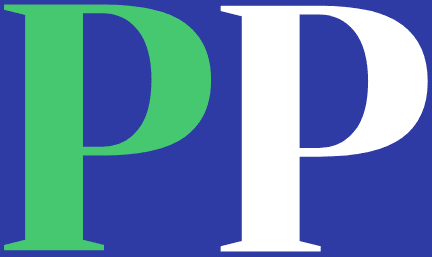Last updated Feb. 16, 2025 by Charles Zemub
The landscape of home financing offers a variety of options to homeowners seeking to tap into their property’s value. One such option is the Home Equity Line of Credit (HELOC), a popular choice for those looking to leverage the equity they have built in their homes. While traditional HELOCs usually come with variable interest rates, a Fixed-Rate HELOC combines the flexibility of access to funds with the stability of predictable payments. This article explores the intricacies of how a Fixed-Rate HELOC works, the benefits and considerations involved, and how it compares to other types of loans.
Understanding Home Equity and HELOCs
Before diving into the specifics of Fixed-Rate HELOCs, it’s vital to grasp the fundamental concept of home equity. Equity represents the portion of your home that you truly own. It is calculated by subtracting any outstanding mortgage balance from your home’s current market value. For instance, if your home is valued at $300,000 and you owe $100,000 on your mortgage, your equity stands at $200,000.
A Home Equity Line of Credit allows homeowners to borrow against this equity. Unlike a lump-sum payment, a HELOC operates much like a credit card, offering a revolving line that homeowners can draw from up to a predefined limit.
How Does a HELOC Work?
Typically, a HELOC comes with two phases:
-
Draw Period: This initial phase usually lasts 5-10 years, during which you can draw funds as needed. Payments during this period are generally interest only.
- Repayment Period: Following the draw period, the repayment phase begins, often lasting 10-20 years, where you start repaying both the principal and interest.
During the draw period, a HELOC typically features a variable interest rate, which fluctuates based on prevailing market rates. This is where a Fixed-Rate HELOC diverges.
What is a Fixed-Rate HELOC?
A Fixed-Rate HELOC, also known as a Convertible HELOC, starts as a standard HELOC with a variable rate. However, it offers the unique option to convert a portion or all of the outstanding balance to a fixed interest rate, typically during the draw period. This conversion stabilizes monthly payments, shielding borrowers from potential rate increases.
The Mechanics of a Fixed-Rate HELOC
Here’s a step-by-step breakdown of how a Fixed-Rate HELOC works:
-
Application and Approval: As with any loan, applying for a HELOC involves assessing your credit score, income, and existing debt. Lenders will require an appraisal to determine your home’s current market value and decide your credit limit.
-
Draw Period with Conversion Option: During the draw period, the borrower can choose to lock in a fixed rate on a portion of the balance. This option is particularly attractive during periods of low-interest rates.
-
Interest-Only Payments: Most HELOCs, including fixed-rate ones, require interest-only payments during the draw period, making them an attractive solution for cash flow management.
-
Repayment Period Transition: Once the draw period concludes, repayment of the principal and interest begins. If the rate is fixed, payments will remain consistent, much like a traditional fixed-rate mortgage.
- Multiple Conversions: Some lenders allow multiple rate locks, enabling you to protect different portions of the outstanding balance at different times, which can be advantageous in shifting economic climates.
Benefits of a Fixed-Rate HELOC
-
Predictability: One of the most compelling benefits is the predictability of payments. Locking in a fixed interest rate ensures that your monthly payments remain constant, aiding in budget planning.
-
Protection from Rate Hikes: A significant risk with variable-rate loans is the potential for interest rate hikes. The fixed-rate option mitigates this risk, providing peace of mind over the loan’s lifespan.
-
Flexibility: The ability to switch between variable and fixed rates adds a layer of flexibility, allowing homeowners to tailor the loan based on financial circumstances and market outlook.
- Tax Advantages: In many cases, the interest paid on a HELOC can be tax-deductible, provided the funds are used for home improvements.
Considerations and Drawbacks
-
Higher Initial Rates: Fixed-rate HELOCs may come with slightly higher interest rates than their variable counterparts due to the stability they offer.
-
Fees and Costs: Potential costs include origination fees, appraisal fees, and conversion fees. It’s crucial to understand these costs when considering a HELOC.
-
Commitment: Once a portion of the HELOC is converted to a fixed rate, switching back to a variable rate is generally not an option. This commitment could be disadvantageous if future rates decrease.
- Limited Access to Funds: If you’ve converted most or all of your HELOC to a fixed rate and require additional funds, you may need to apply for another financial product or refinance.
Comparison with Other Loan Options
Fixed-Rate HELOC vs. Traditional HELOC
- Interest Variability: A standard HELOC will often start with lower rates, but these can increase, leading to unexpected higher payments. A fixed-rate version sacrifices initial rate savings for payment predictability.
- Budgeting Confidence: A Fixed-Rate HELOC is preferable for those who prioritize consistent budgeting.
Fixed-Rate HELOC vs. Home Equity Loan
- Upfront Lump Sum vs. Revolving Credit: Home equity loans provide a lump sum with even repayments, favored by those with a clear one-time spending need. In contrast, a Fixed-Rate HELOC suits those preferring withdrawal flexibility.
- Rate and Payment Stability: Both offer fixed rates, assuring consistent payments. A decision between these will rest on whether access flexibility or immediate cash needs take precedence.
Fixed-Rate HELOC vs. Cash-Out Refinance
- Loan Restructuring: A cash-out refinance replaces the primary mortgage with a new, larger one, incorporating the equity. This option is worth considering if interest rates are currently low and you prefer an all-in-one loan.
- Retaining Current Mortgage: With a Fixed-Rate HELOC, your existing mortgage remains untouched, which can be advantageous if your current rate is favorable.
✓ Short Answer
A Fixed-Rate HELOC combines a home equity line of credit with the option of converting to a fixed interest rate. It starts with a draw period where you can borrow against your home’s equity as needed. You have the flexibility to convert all or part of this balance to a fixed rate, ensuring stable monthly payments. This option protects against interest rate fluctuations, offering predictability and supporting long-term financial planning. However, it may involve higher initial rates and fees compared to standard HELOCs. It’s ideal for homeowners seeking predictable payments while retaining access to funds over time.
FAQs
What is the difference between a HELOC and a home equity loan?
A HELOC is a revolving line of credit with variable rates, offering flexibility in borrowing and repayment. In contrast, a home equity loan provides a lump sum with fixed rates, structured more like a second mortgage with set repayments.
Can I convert my entire HELOC balance to a fixed rate?
Yes, with a Fixed-Rate HELOC, lenders often allow you to lock in a fixed rate on your entire balance or just a portion. The specifics depend on the lender’s terms and your financial strategy.
Are there penalties for converting to a fixed rate?
Typically, lenders do not penalize for conversion itself, but there might be fees associated with the process. Always review the terms with your lender to understand any costs involved.
How does a Fixed-Rate HELOC impact my credit score?
Applying for a Fixed-Rate HELOC involves a credit inquiry, which may temporarily affect your score. Timely payments can improve your credit over time, while missed payments can have a negative impact.
When is the best time to convert my HELOC to a fixed rate?
The optimal time to convert depends on market conditions and your financial situation. It’s advisable to lock in a rate when interest rates are low and stable, alleviating concerns of future rate hikes.
In conclusion, a Fixed-Rate HELOC offers the best of both worlds — the flexibility of accessing funds when needed and the security of fixed, predictable payments. Understanding the detailed mechanics, benefits, and potential drawbacks can aid homeowners in making informed decisions about leveraging their home equity effectively.



